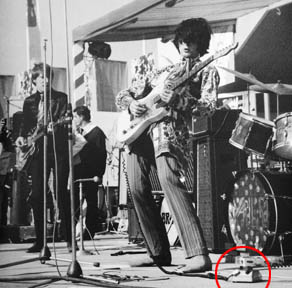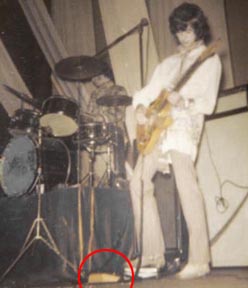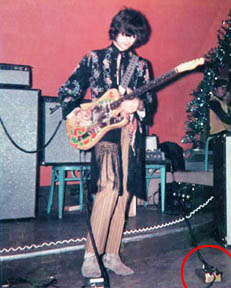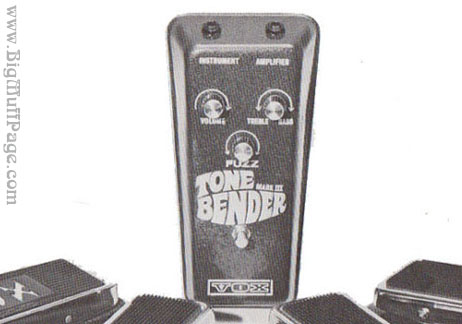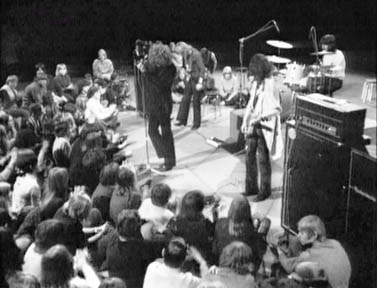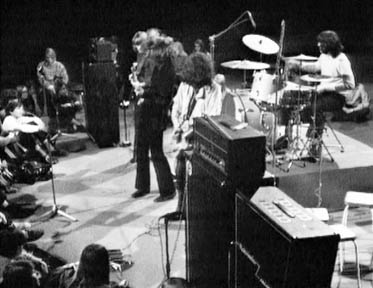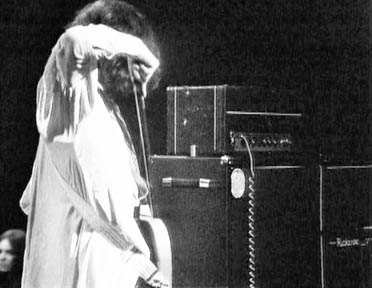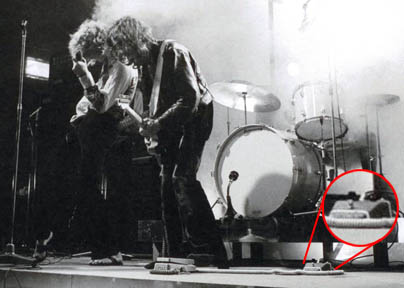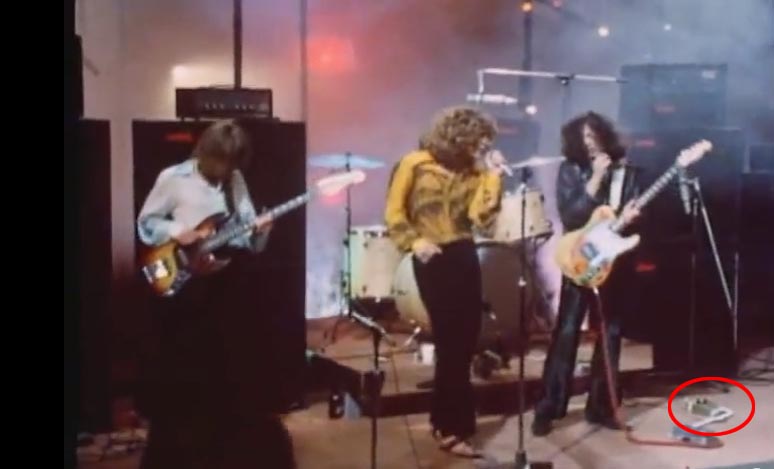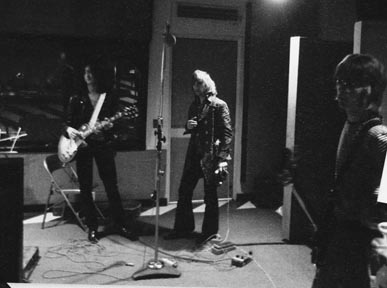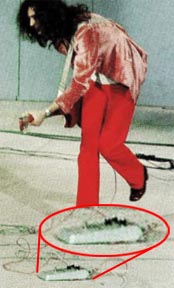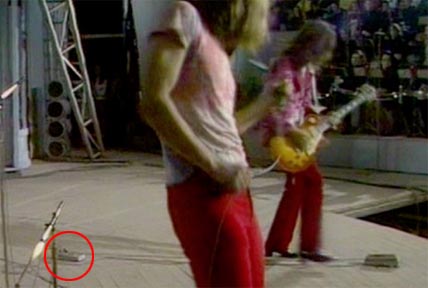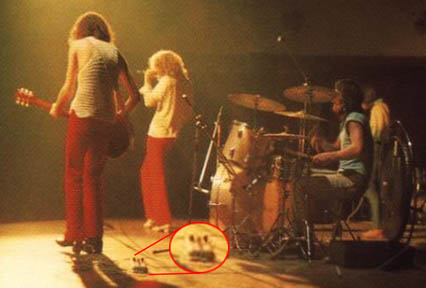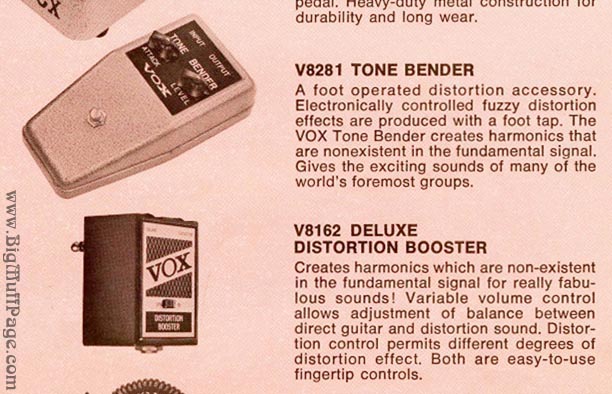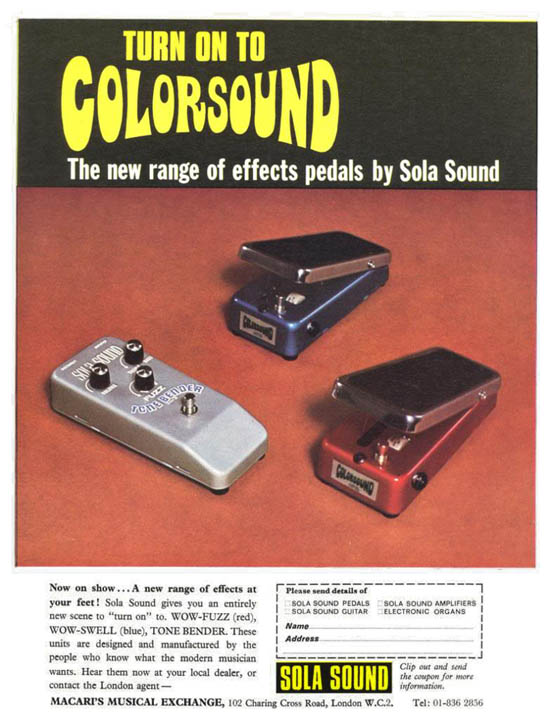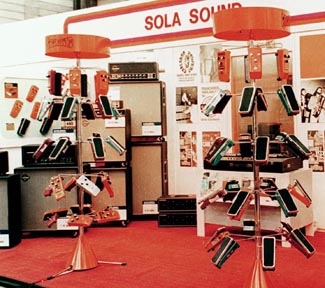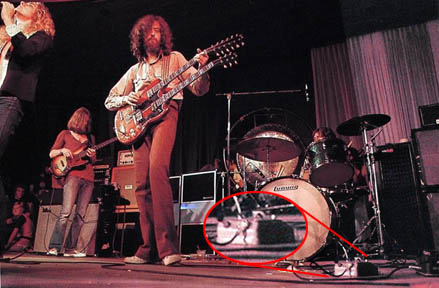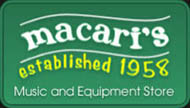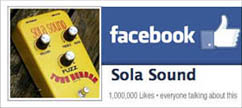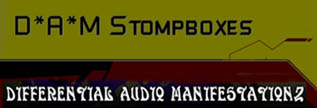The Tone Bender Timeline
VISIT MY SWORDS, KNIVES and FANTASY ART WEBSITE www.kitrae.net
This page is periodically updated to reflect new information. Do not reprint or repost without permission.
©2009 Kit Rae. Last update January 2016.
•1967 - Genesis of the Colorsound brand - At the Golden Egg restaurant on Charing Cross Road, London, Larry and Joe Macari decide to set up a full manufacturing facility to meet the current production demands for Color Sound, and to expand into a full line of effects pedals. They come up with the the idea that each effect pedal will be housed in a different, brightly coloured enclosure. This new line will be branded Colorsound. They make plans to become the largest effects company on the world.
•1967 - Gary Hurst is still running his "Gary Hurst Electronics" business from the back of the new Musical Exchange shop at 100 Charing Cross road. He breaks his leg playing football and takes a few months off work to recover. According to Gary, upon returning he finds that Macaris had completely taken over the Tone Bender line, leaving Gary out of control. Doug McDonald has taken more of a stronger role in Gary's absence.
•1967 - Creation of JEN Elettronics. Thomas Organ was making the first Cry Baby Wah Wah pedals in California, but Joe Benaron, president of Thomas Organ, wanted to move production to Italy to reduce costs. Joe approached the manufacturing company Eko in Italy about making the Wah. Eko declined, but Eko's manufacturing manager, Ennio Uncini, wanted to do it. Ennio and Joe then formed their own company in 1967 called JEN (named from the J in Joe and EN from Ennio). Ennio supervised operations in Italy, where Jen handled the Cry Baby Wah production for a while in 1968, as well as making the Vox Wah Wah's and other Vox pedals. Thomas Organ distributed the pedals in the USA, and JEI distributed them for the European markets. Jen later marketed a line of pedals under their own brand beginning in 1968.
•1967 April - Jimmy Page is seen using his gold Tone Bender during the Yardbirds April 30th 1967 performanc in Chaville, France.
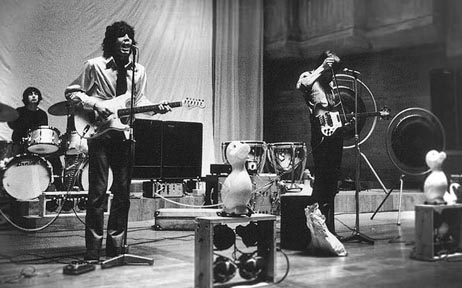 ...
...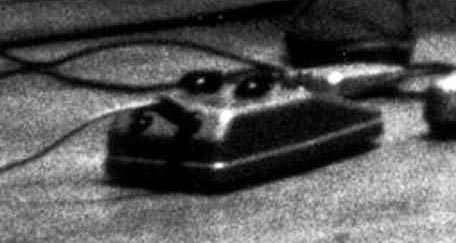
Syd Barret with a Tone Bender, May 1967
•1967 May - Syd Barrett of Pink Floyd is seen with a Tone Bender at the Games for May concert on May 12th, although it appears not to be plugged in. He normally used a Selmer Buzz-Tone (FZ-1 clone variant) for distortion. It is often stated that the fuzz Syd was seen with in this perfirmance is an Italian Vox Tone Bender, but this is not the Italian made Vox. It is an original Tone Bender made in London by Sola Sound. Based on the appearance, chicken head knobs, and the date of use, this is most likely a Professional MKII Tone Bender. Sola Sound made the MK1.5 and MKII (both the Vox branded version and Sola Sound branded version) all in this same case style.
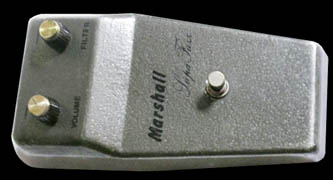
•1967 - Marshall Supa Fuzz on market. This was the second Supa Fuzz version, a rebranded Tone Bender Professional Mark II made by Sola Sound of London for Marshall. Almost exactly the same circuit as the Mark II. Two of these prototype Supa Fuzzes are known to exist. One is marked only with the "Supa Fuzz" text, the other is branded with Marshall, like the production units.
•1967 - Ennio Uncini is made the new head of EME after Oliviero Pigini (president of EKO and EME) dies in 1967.
•1967 August - Jimmy Page is seen using his gold Tone Bender during the Yardbirds performance in the The Village Theatre in Greenwich Village, New York, August 25, 1967. Jake Holmes was the opening act and played Dazed and Confused, which the Yardbirds would later cover as their own song. Led Zeppelin recorded a reworked version of the song a few years later, with no credit to Holmes.
•1967 September - Tom Jennings is fired (according to Vox chief engineer Derek Underdown, and apprentice John Oram) as head of JMI by JMI owners The Royston Group, along with several other long time JMI employees, including Derek Underdown. The relationship between JMI/Vox and EME ends and Ennio Uncini resigns/or is fired from EME and goes to work for EKO. Reportedly Tom and others had long been unhappy with the things going on within the company and business practices he did not agree with.
•1967 November - Jimmy Page is seen using his gold Tone Bender during the Yardbirds performance at the PNE Gardens Auditorium, in Vancouver British Columbia, November 10, 1967.
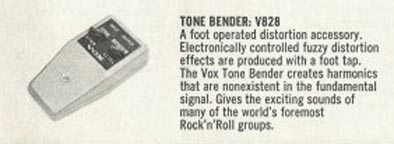
Italian made black face Vox Tone Bender from a 1967 Vox Catalog
•1967 November or earlier - Vox Tone Bender on market. This is the Italian made Tone Bender, manufactured by JEN in Pescara, Italy. Gary Hurst has stated (in Guitarre 2003) that the first Italian Tone Benders were actually made by Eko, where the AC-30 was made, then moved to Jen. It was sold around the world, and is usually the unit most people think of when they hear the name Tone Bender. The Italian Vox TB replaced the briefly made Vox TB MKII manufactured by Sola Sound in 1966. The most likely reason for JMI to use Italian production instead of continuing to use Sola Sound would have been that the mass production capabilities were far larger at JEN, and the Italian's charged less than Sola Sound. Vox products were sold world wide, so capacity would have been the primary factor. Vox had used multiple manufacturers for Organs, Wah Wah pedals, and guitars in the past, to meet demand for product, so this was common. A Vox Tone Bender has been seen with an inspection tag for Vox V828 #5035, dated "13 November 1967".
The enclosure was similar to the Sola Sound Mk1.5/MKII case, in silver hammerite finish with a black logo panel. Later production changed to a black enclosure with silver panel. There is some disagreement about who was responsible for the original circuit design. According to JMI/Vox engineer Dick Denney, the Vox TB was based on a fuzz circuit he designed for Vox in the early 1960's that was not brought to market. The Italian Vox circuit seems to be based on the two-transistor Tone Bender MK1.5 circuit. Gary Hurst has stated there were no two-transistor Sola Sound Tone Benders, but at other times claimed to be the designer of the two-transistor Tone Bender. In 2009 he stated, "Vox then linked up with an Italian company, copied the casting, but changed the insides - it went back to the two transistor design and they really were terrible." He stated in 2003 that Vox used used a two transistor circuit, rather than three like the Sola Sound version, simply to save on production cost.
•1967 - Elka Fuzz made by Jen for Elka Electronics, in Pescara, Italy. In the same enclosure as the Italian made Vox Tone Bender. The circuit is very similar to the Buzzaround/Tone Bender MK III circuit. Gary Hurst claims he designed this circuit for Elka.
•1967 - Elka Dizzytone Fuzz, possibly made by JEN for Elka in Italy, but the enclosure does not match any JEN or OEM enclosures. The circuit is very similar to the Burns Buzzaround/Tone Bender Mk III circuit.
•1968 - Gary Hurst leaves England Sometime in early 1968 and moves to Italy. Doug McDonald is now Macaris primary engineer and supervises building the effects. Gary continued to work with the Macaris/Sola Sound years later on projects, and ran the Eurotec brand in Italy in the late 1970's, building pedals for CBS/Arbiter and Meazzi, and electronic pianos for Korg.
•1968 - Tom Jennings creates Jennings Electronic Industries (JEI) in 1968. Dick Denney and Vox Custom Shop manager Mick Bennett join JEI.
•1968 - JMI/Vox and Thomas Organ Vox Wah-Wah production is moved to Italy, made in EME, their joint venture factory.
•1968 - Jimmy Page plays session guitar on March 29-30th for Joe Cocker's With A Little Help from My Friends album, including the title track, which sounds like a Tone Bender.
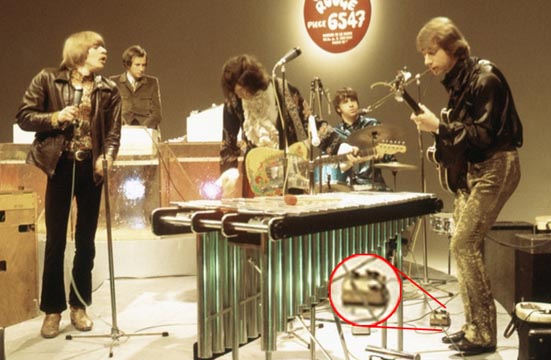
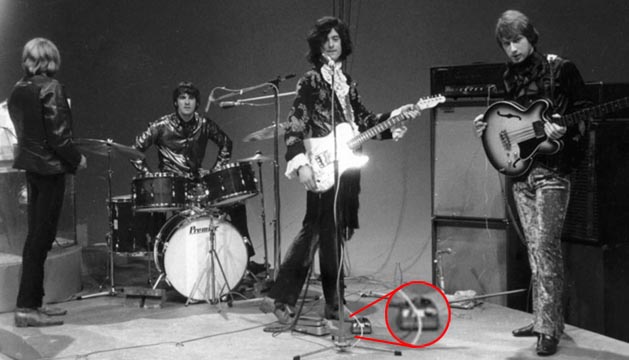
Jimmy Page using his gold Tone Bender with the Yardbirds on the Bouton Rouge French television show, March 1968
•1968 March - Jimmy Page uses a Tone Bender in a MK II style case for the Yardbirds appearance on their Bouton Rouge French television show, March 9th 1968. He clearly switches the pedal on and off for the guitar solos.
•1968 April - Guitarist Alan Parker uses MK II Tone Bender on the April 3rd recording of the Donovan song Hurdy Gurdy Man. Donovan has claimed Jimmy Page played the guitar in this song, along with John Paul Jones on bass and John Bonham on drums (all later of Led Zeppelin). However, Jimmy Page has denied this, and John Paul Jones, who actually did play bass on the song, as well as arranged and produced the music and booked the musicians for these sessions, stated that it was Alan Parker on guitar and Clem Cattini on drums. Alan Parker himself has also confirmed it was him, and that he played an SG Les Paul (modified with Bigsby Palm Pedal levers to bend notes) through a MKII Tone Bender, into a Fender Deluxe Reverb (thanks to anemochore/garbeaj for his research confirming the gear). Jimmy Page did play acoustic guitar for the Hurdy Gurdy Man album sessions, as he mentions in a 1969 interview, but not for this song.
•1968 June - JMI/Vox owners, the Royston Group, file for bankruptcy and the bank takes control of the company.
•1968 - Vox Tone Bender Mark III, an OEM label version of the MKIII Tone Bender made for Vox by Sola Sound of London. Identical to the Tone Bender Mark III only with different graphics. The MKIII was a three knob version of the three transistor Tone Bender with an added tone control to adjust treble and bass, and a new tapered pressed sheet metal enclosure. This is the most common of the Mark III versions, and included MARK III in the graphics. There was a rare Sola Sound branded version, but the majority of the MKIIIs are branded Vox, as Vox was the more well known and widely distributed brand. Macaris Musical Exchange had taken over the Vox store on Charing Cross road, and reportedly was the exclusive seller of Vox products in London at the time. Some Vox MKIIIs were sold in boxes marked Sola Sound.
Several variations of the circuit were made, with minor cap and resistor changes, but differentiating between "Vox" and "Sola Sound" MKIII circuits can be misleading, as they were all made in the Sola Sound factory. The same circuit was used for both brands, and they tweaked the circuit as the times changed for what guitarists were wanting. The same circuit variations appeared later in the MK IV Tone Bender in a different enclosure. OEM labeled versions in different enclosures were aslo were made for Park, Rotosound, and others, but the most common was the Vox version. Jimmy Page was seen using the Rotosound branded version in June and is named with "used and recommended by" in Sola Sound advertisements.
•1968 June or earlier - MKIII Tone Bender by Sola Sound on market. This was the rare Sola Sound branded version of the MKIII. The graphics were similar to the Vox version, minus the VOX brand and MARK III graphic, but otherwise it was identical to the Vox enclosure and circuit.
•1968 - Park Fuzz Sound, an OEM label version of the MKIII made for Park by Sola Sound of London. Identical to the Sola Sound Tone Bender Mark III circuit.
•1968 - Rotosound Tone Bender Mark III, an OEM label version made for Rotosound by Sola Sound of London. Identical to the Sola Sound Tone Bender Mark III circuit.
•1968 June - The Yardbirds play their last gig in America and break up. Jimmy Page then decides for reform the band with a new line up.
•1968 August - Jimmy Page interviewed for Hit Parader by Jim Delehant (HP editor 1962-'69) in August. When asked about the 'unusual device he used on his guitar' Jimmy states: "It's called a Tone Bender. I had somebody custom make it for me and I get 75% of my sound with it. It's very similar to a fuzz box, but I can sustain notes for several minutes if I want to. It just has an on and off switch and it also has a fuzzy sound. It's not manufactured at all. A friend of mine made it by hand for me. (Ed note: guitarists interested in buying the "Jimmy Page Tonebender" may write to Gary Hurst, Macaris Musical Exchange, 100 Charing Cross Rd., London, W.C.2, England. The price is around $35.00). From Jimmy Page's New Yardbirds, printed December 1968 in Hit Parader.
Jimmy is talking about his current live Yardbirds sound here, as he would not be recording the first Led Zeppelin album until two months later. Jimmy was then using a Tone Bender in the gold colored MKII Professional style case, possibly the same MKII sent to him by Macaris Musical Exchange in December 1967. He was seen using the gold one on March 9th, 1968 in a French tv appearance (pictured above), and then a silver Tonebender from time to time on stage from 1968-71. Jimmy mentions that he can "sustain notes for several minutes if I want to", which would seem to indicate a MKII circuit. The MKII was also advertised as "Previously Only Custom Built and Sold to Britain's Top Artists".
A Sola Sound advertisement from February 1970 shows a Sola Sound branded three-knob MKIII, stating "used and recommended by Jimmy page of Led Zeppelin". Jimmy had a deal with the Macaris where they would supply him with gear in exchange for allowing the use of his name in advertising. The fact that Gary Hurst and the 100 Charing Cross Road address are listed in the ad seems to indicate Gary was still working out of the Macaris shop in August 1968 (Gary states he moved to Italy in early '68), but this was likely just the last address Hit Parader had on file for Gary from earlier press material. Note that this is the first mention of the 100 Charing Cross Road as an address for the Musical Exchange, as the Macaris had taken over and bought the space from JMI/Vox in 1967, when Vox stopped selling storefront retail.
In a 1977 interview by Steven Rosen, Jimmy Page had this to say when asked if he used any boosters with the Yardbirds: "Fuzz-tone which I’d virtually regurgitated from what I heard on “2000 Pound Bee” by The Ventures. They had a Fuzz-tone. It was nothing like the one this guy, Roger Mayer, made for me; he worked for the Admiralty (British Navy) in the electronics division. He did all the fuzz pedals for Jimi Hendrix later; all those octave doublers and things like that. He made this one for me, but that was all during the studio period, you see. I think Jeff had quite a lot of the boost and that sort of sustain in the music." This quote seems a clear indication that Page had stopped using the Mayer fuzz after his session days, although he seems to think he used a Maestro Fuzz-tone for the Yardbirds work. Except for one instance, what he was usually seen using in live Yardbirds performances was a Tone Bender in a gold colored Professional MKII style case, so Page may have started mixing the pedal names up as early as 1977.
In those later years Jimmy seems to have not only confused what pedals he was using, but also confused effects maker Gary Hurst for effects maker Roger Mayer, who made Jimmy's first fuzz box he used from 1964 to early 1965. In the 2000s and later, Page often named Mayer as the Tone Bender maker. Mayer was the more well known name due to his work with Jimi Hendrix, so perhaps that name may have just stuck in his mind. Looking back at the 1968 Hit Parader interview, and photos of what Jimmy was actually using live and in the studio, it is clear he was using a Gary Hurst Tone Bender. In the 2008 film It Might Get Loud Jimmy again names Mayer as the pedal maker, but the pedal shown in the film is actually a MKII Tone Bender. There is also a closeup shot of another MKII in the film, but that appears to be a reissue from the 1990s that was inserted into the film at a later date. Jimmy has also confused other people from the time. For example, Page has stated he borrowed a J-200 Gibson acoustic for recording the first two Zeppelin albums, once saying it was Jim Sullivan's, (Sullivan has also said this), but in a 1998 interview Page states he borrowed it from producer Mickey Most. Perfectly understandable considering he is trying to remember people and minor events from 40-50 years in the past!
Roger Mayer did design a fuzz pedal for Jimmy in 1964 (confirmed by Page and Mayer commenst from that period and later), based on a Maestro Fuzz-Tone, used briefly in Jimmy's pre Yardbirds session days. Rumors and wild stories have appeared on the internet over the years about Roger modifying a Tone Bender for Page, or Page putting the guts of his Mayer fuzz inside the more practical MKII case, among other tales, but there is no proof of any of this. Roger Mayer has even denied ever modifying a Tone Bender, or placing his circuit inside a MKII enclosure. Page may have done this himself, but a simple listen to the live and studio recordings from 1968-1969, and comparison to a MKII, reveals that is likely exactly the circuit in his Tone Bender. The only oddity is that the gated 'bloom' of Pages Tone Bender seems more extreme on some tracks than a typical MKII, and more like the extremely rare early Supa Fuzz versio of the Tonebender circuit with the filter control, which was actually a modified MKI circuit. Perhaps some MKII Tone Bender's were made with this circuit. Those early Supa Fuzz circuits and the MKII's were all being made around the same time in late 1965.
•1968 September - London Musical Instrument Trade Fair held in September shows the JEN line of effects pedals, the plastic boxed Distortion Booster, version 2 Supa Fuzz, Vox Wah & Fuzz, Selmer Fuzz 'n' Wah, and the line of amps and foot pedals from Tom Jennings new company.
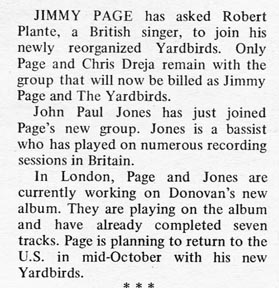 ...
... 
•1968 September - Jimmy Page and his new Yardbirds lineup (John Paul Jones, John Bonham, Robert Plant) play a handful of live dates in Sweden to fulfill old Yardbirds contractual obligations.
•1968 September - Jimmy Page and his new Yardbirds lineup (John Paul Jones, John Bonham, Robert Plant) record as the backing band for P.J. Proby's album Three Week Hero at Olympic Studios, London, in September 1968. Jimmy's Tone Bender can be heard on several tracks, such as Mery Hopkins Never Had Days Like These.
•1968 October - Jimmy Page and his new Yardbirds line up are set to do a few dates in England. The band name is changed to Led Zeppelin (noted in Disc Magazine, October 1968), as ex Yardbirds bassist Chris Dreja owned the Yardbirds name and did not want them using it. Zeppelin went back into Olympic Studios, London around this time to record new material from September 27-October. The material was mixed in October, the band went on tour with the new material in the US in December, and the self titled album Led Zeppelin was released January 1969. There is a wide variety of dirty rhythm, distorted power chords, and distorted lead tones on the album. How to get these tones from Jimmy's simple setup has baffled guitarists for years. Several of the tracks on the album sound very similar to Jimmy's live 1968 sound with the Yardbirds which featured a slightly dirty amp tone and a gold Tonebender for leads. The fact that the Yardbirds had different amps at every filmed appearance means they were probably all house amps or rentals - Vox solid state Super Beatle, Vox AC-100, Fender Dual-Showman, et cetera. In a Guitar World interview by Brad Tolinski in 1997 Page talked about the gear he used on the first LZ album: "It was basically whatever we could afford at that time. I didn’t really make any money when I was with the Yardbirds, so I was pretty broke in the beginning. I actually had to finance the first Zeppelin album with money I had saved as a session musician. What I had as equipment was very minimal. I had my Telecaster that Jeff Beck gave me, a Harmony acoustic, a bunch of Rickenbacker TransSonic cabinets left over from the Yardbirds, and a hodge-podge of amps - Vox and Hiwatts, mostly. I also had a black Les Paul Custom with a big tremolo arm...All I used for pedals was an Echoplex, a Tonebender distortion and a wah-wah...If you listen to the first album, the Tele is doing all of that with the pedals I just mentioned. It was certainly doing the job."
The Tone Bender was used for heavy rhythm work and solos, along witha Vox Wah Wah pedal. It was likely a Tone Bender Professional Mark II but, as with his Yardbirds sound, many of the leads have the heavier gated bloom of the first version of Marshall Supa Fuzz circuit made by Sola Sound. That circuit was a MKI Tone Bender with the distortion (attack knob) fixed at maximim internally and a filter control in place of the attack knob. It was used in the Supa Fuzz briefly, then Sola Sound switched to use a slightly modified MKII Tone Bender circuit.
The normal MKII circuit gets close for these tones, but the filter control version of the Supa is closer. Since both versions of the circuit were being made by Sola Sound around the same time in late 1966, it is possible some MKIIs were made with the Supa Fuzz circuit inside, and that is what Page had. According to him, most of the album was recorded using his Yardbirds Telecaster through a small Supro amp with a 12" speaker that he bought in 1961 or 1962. Supro amps were made by Valco in Chicago. There is much debate about which Supro amp Jimmy used, but Albert Lee, who turned Page on to Supro amps in his session days, said his own Supro had a 15" speaker and confirmed he thinks Jimmy bought a smaller 12" one. The only Supro amps available at that time with a 12" speaker were the 1624T and 1690T. Here is a relevant Jimmy Page quote from a 1977 Steve Rosen interview, when asked what kind of amplifiers he was using for session work: "A small Supro, which I used until someone, I don’t know who, smashed it up for me. I’m going to try to get another one. It’s like a Harmony amp, I think, and all of the first album (Led Zeppelin) was done on that."
The exact amp is not as important however, as Jimmy could get similar tones through a variaety of amps in those Yardbirds television appearances. In my opinion the core lead tones can be achieved simply with a combo of the Tone Bender (MKII or filter control Supa Fuzz) and Telecaster, using the Tele volume knob to control the amount of distortion, and the tone pot turned to the bass side to control tone color. Using the Wah in a fixed (cocked wah) position along with the Tone Bender, and certain volume and tone settings on the Tele, also creates a wide range of similar tones. For example, try turning a Tele tone pot completely to the bass side, set the volume near 10, set the wah to the bass end of the filter sweep, and switch on a MKII Tone Bender with the attack knob at maximum. Although much of the studio recording includes beautiful room reverb from distant micing techniques and delay, if you play around with a Tele, Tone Bender, and a Vox Wah into a clean or slightly dirty tube amplifier, it is possible to find nearly all of the tones heard on the album.
As a side note, Roger Mayer was often confusingly cited by Page in later years as the maker of his Gary Hurst Tone Bender (see December '68 entry below). There have been rumors circulating that Page put his Roger Mayer fuzz circuit inside his Yardbirds/LZI Tone Bender because he liked the Tone Bender case better, or that Mayer made the mod himself. Mayer also worked for Olympic Studios where Led Zeppelin I was recorded. This has led some to believe Zep I was recorded using the Mayer fuzz. It is worth pointing out that Mayer was actually on tour with the Jimi Hendrix Experience in 1968-early 1969. He did not go to work for Olympic Studios until after Led Zeppelin was recorded, and he has denied building or modifying a circuit inside a Tone Bender pedal for Page. Page as also never said anything about doing this. It is also worth notong that is fuzz sound from the period he had the Mayer Fuzz is very diferent to his later Yardbirds and Led Zeppelin I fuzz tone.
Jimmy Page at Led Zeppelin's Danmark's Radio performance, March 1969. The bottom right photo appears to be a promo or rehearsal photo with two Transonic speaker cabs instead of the Bassman and single Transonic cab used for the actual performance.

Jimmy Page Tone Bender and wah pedals from the Danmark's Radio performance. It is unclear if this is Page's previous gold Tonebender, or a silver Tonebender
•1969 March - Jimmy Page uses a Tone Bender in a MK II case for Led Zeppelin's Danmark's Radio performance on March 17th (available on the Led Zeppelin DVD). The Tone Bender is wrapped with white tape, possibly because the bottom plate screws were lost, or simply as a quick way to remove the bottom plate to change batteries. Jimmy played through an Arbiter Power One Hundred (similar to a Sound City 105) amp with the drive set high for a dirty tone. A Fender Bassman speaker cabinet is under the Arbiter and a Rickenbacker Transonic cab to the right. Although many people think Jimmy's Tone Bender seems to be on through most of the performance, it is more likely the overdriven tone is simply the Arbiter amp. Jimmy can be seen and heard switching his Tone Bender on for the Dazed and Confused solo and can be heard switching it on for the solo in How Many More Times, then seen turning it off again before the bow solo. Becasue the footage is black and white, it is unclear if this is Page's previous gold Tonebender, or a silver Tonebender. Based on the tape wrapped around the case, this is most likely the sampe silver Tonebender he was seen using shortly thereafter.
Led Zeppelin's performance for the Supershow film, March 1969, with a new silver Tonebender.
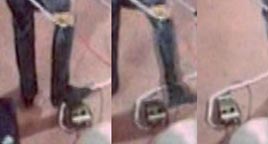
•1969 March - Jimmy Page again uses the same tape-wrapped silver Tone Bender for Led Zeppelin's performance in the Supershow movie, filmed on March 25, 1969 in Staines, England. The film premiered in London in Novemeber 1969, and featured a number of different bands and musicians. Page played through a WEM Ultimus amp and WEM speaker cabinets.
Jimmy Page with his Tone Bender for the May 1969 Screaming Lord Such sessions. Jimmy is holding the Gibson Les Paul sold to him by Joe Walsh in April, and first used in Led Zeppelin's late April San Francisco shows.
•1969 May - Jimmy Page and John Bonham play on the Screamin Lord Such sessions for Lord Such And Heavy Friends, recorded in a few days beginning May 7, 1969 at Mystic Studios in Hollywood. A Tone Bender can be seen on the floor in one studio photo. Lord Such gave Page guitr credits and credited him as a producer of the album, but Page has stated he only helped with the backing tracks for a few of the songs, did not produce the album, nor did he play any of the solos.
Jimmy Page with a Rotosound Fuzz Box for Led Zeppelin's Tous En Scene television appearance, June 1969
Jimmy Page using a Rotosound Fuzz Box for Led Zeppelin's performance in Bristol, England, June 1969
•1969 June - Jimmy Page spotted using a Rotosound Fuzz Box on stage with Led Zeppelin for the Tous En Scene television appearance, June 19th Paris, France. The Rotosound is identical to the Sola Sound Tone Bender Mark III circuit. It was spotted on stage again few days later on the 21st in Bristol, then again at the Royal Albert Hall perfrmance on the 29th. Jimmy was using his Arbiter Power One Hundred amp through Marhsall speaker cabinets.
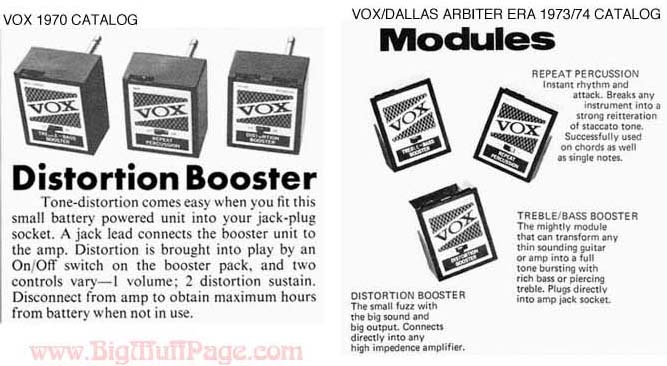
Vox 1969 - 1973 catalog pages
•1969 - The Deluxe Vox Distortion Booster is moved into a new square plastic plug-in enclosure, made in Italy. It was first shown at the 1968 Musical Instrument Trade Fair in London. This new version included both volume and distortion controls. The exact same unit was sold under various brands, including Jen, Elka, Jen, GIS, and GEM, and the same enclosure was used to house the other plug-in Vox boosters. In the 1970 Vox catalog it lost "Deluxe" from the name, and thereafter was simply called the Distortion Booster.
•1969-1970 - JEN Elettronica in Italy takes over production of the Vox Wah-Wah pedals and eventually manufactures the entire line of Vox effects.
Sola Sound advertisement circa 1971, and Sola Sound trade show booth from 1970, displaying the new Colorsound line
•1970 - The Colorsound trademark first appears in magazine ads, featuring a range of Colorsound branded pedals made by Sola Sound in their new manufacturing facility. The Tone Bender was given a new look, and the words Hit It by the foot switch. The address shown in ads from this period is 102 Charing Cross Road, London W.C.2. By 1972 they would be exporting Colorsound effects pedals to 48 countries worldwide. It seems Macaris occupied both 102 and 100 Charing Cross at this time store fronts at this time.
102 Charing Cross, located right beside 100, was formerly a clothing shop. Around 1973 Emerson Lake and Palmer's Manticore Records label office was located above it.
•1970 January - Led Zeppelin play the Royal Albert Hall. Jimmy Page supposedly used a Rotosound Fuzz Box, but he also used custom Hiwatts at this time with the preamps modified to give more gain. The Rotosound is an OEM label version of the MKIII Tone Bender made for Rotosound by Sola Sound of London.
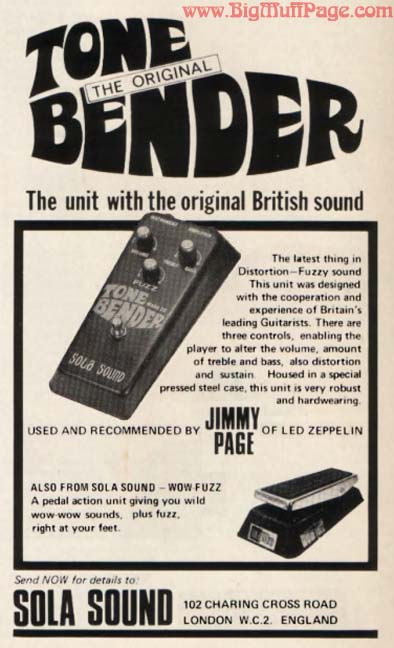
•1970 February - Sola Sound MKIII Tone Bender advertised in the February 1970 issue of Beat Instrumental. Macaris/Sola Sound had an arrangement with Page to supply him with any of the latest products that he may require in return for using him in their advertising.
•1970 - MKIV Tone Bender on market. This was basically the MKIII Tone Bender in a new shaped sheet metal case, to differentiate it from the Vox Mark III Tone Bender in the slanted case. This case style would become the standard from this point on for Sola Sound and Colorsound branded products, and was the most common case style ever used for Tone Benders. It was silver with white and blue graphics, including the MARK IV brand. The circuit was the same as the MKIII, but a few resistor and cap values were changed over time.
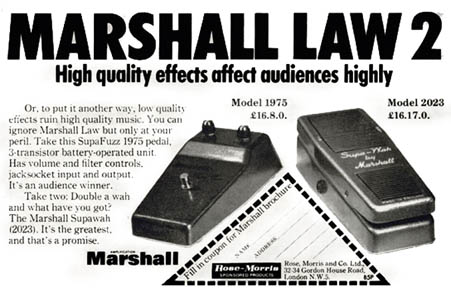
1970 Marshall Supa Fuzz advertisement
•1970 - Vox is sold to a consortium. Reg Clark leaves Vox in January and joins Dallas Arbiter.
Jimmy Pagewith a silver Tone Bender for Led Zeppelin's performance at Casino de Montreux, August 1971
•1971 - Jimmy Page is seen with a silver Tone Bender on stage at Led Zeppelin's performance at Casino de Montreux, Switzerland, August 1971.
•1971 - Jimmy Page is seen using a Univox Uni-drive (made by Unicord in Japan) and a Professional MKII Tone Bender, from time to time on stage with Led Zeppelin. After this he seems to have switched to using mostly amp distortion when playing live.
•1970-71 - Tone Bender FUZZ on market. This was the most common version of the Tonebender, made from around 1970-76, with a variety of different circuits inside. It was basically the three knob MKIV Tone Bender with new graphics. It was in the silver MKIV case, branded Tone Bender Fuzz with orange and black printing. There were slight graphics changes made over time. These are often called MKIII or MKIV Tonebenders, but there was no MK designation in the graphics or anywhere on the pedal, and at that point in Tonebender history the MK designation really did not mean much. There were several variations of the circuit inside, but most were essentially same circuit used in the earlier MKIII and MKIV Tonebenders.
The ones with the wide TREBLE and BASS spacing had one of several variations of the three transistor Tonebender circuit inside. Most production had Germanium transistors but I have seen a few with Silicon. Some had the Sola Sound/Vox MKIII Tonebender circuit inside (there were several variations). Some had the Sola Sound MKIV circuit inside, which was basically the same as the III but with a few resistor and cap values that changed over time. A few of the late models had the Jumbo Tonebender (Big Muff ) circuit inside.
•1972 (circa) - JEN Double Sound Super Fuzz Wah on market. The fuzz part of the circuit is nearly the same as the 1965 Vox Distortion Booster.
•1973 - Colorsound Supa Tone Bender on market. By Sola Sound of London, branded under their Colorsound label. A modified Big Muff clone. This was essentially a knockoff of the four transistor 1973 violet Ram's Head Big Muff minus the coupling caps and clipping diodes in the first clipping stage. Early circuit boards included the holes for the missing components, so it appears the original intent was to exactly clone the violet RH. The Supa was also made in a three transistor version that eliminated the recovery stage. That same circuit also appeared in the 1973 Tone Bender Fuzz case and much later in the 1976 Colorsound Jumbo Tonebender case.
•1973 - Steve Hackett uses the Colorsound Supa Tonebender in Genesis. Quote from Steve: "I used to enjoy using the Tone Bender and the (Shaftsbury) Duo-Fuzz at the same time - It gave a very thin 'violinish' sound provided you used reverb or repeat echo to give it some gloss."
•1973 - Tone Bender FUZZ 'tone control' version on market. By Sola Sound of London, circa 1972-73. The same silver enclosure as the circa 1970-71 Sola Sound Tone Bender Fuzz, but this version featured a simplified V3 Big Muff circuit rather than the Tone Bender MK III/IV circuit. The only visual difference between this and the standard Tone Bender Fuzz enclosure was the word TONE instead of TREBLE and BASS under the tone knob. This three transistor circuit was also used later in the 1976 Colorsound Jumbo Tone Bender. There was a Tone Bender Fuzz reissue made in the 1990's that used a version of this same simplified Big Muff circuit, but the case was marked TREBLE and BASS like the earlier version instead of TONE.
•1974 - CBS Arbiter buys Vox (some sources say this occurred in 1972). Reg Clark, who was working for Arbiter, returns to work for Vox.
•1974 - Sola Sound/Colorsound move into a larger facility in Edgeware. Many Colorsound effects are now built in the wide case like the Supa Tone Bender.
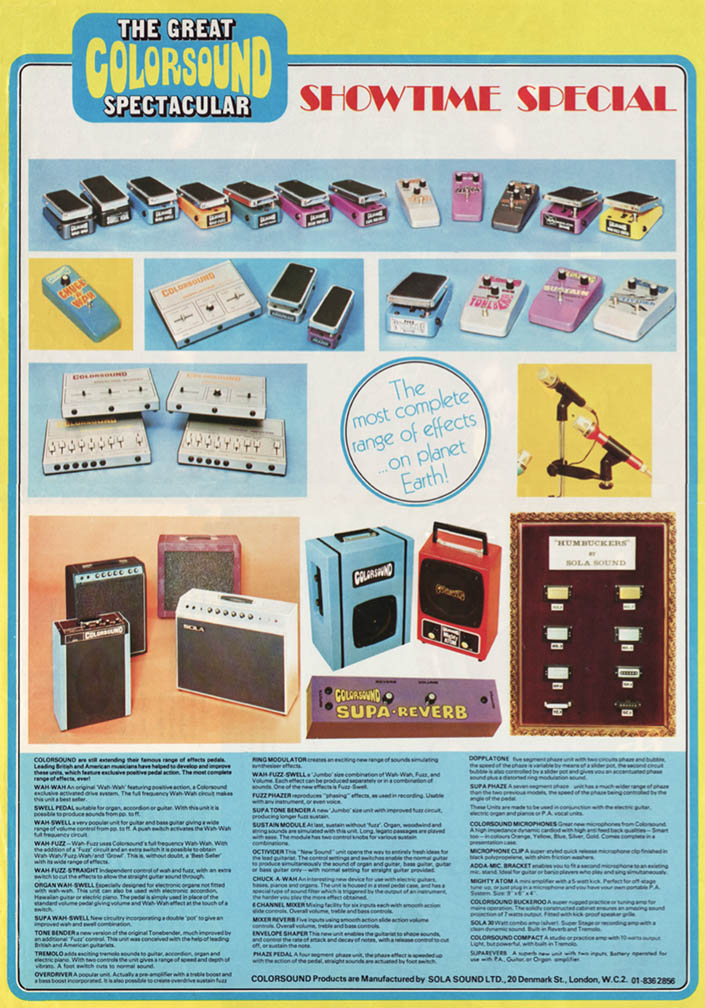
1975 Colorsound Product Range
•1975 - Colorsound Jumbo Tone Bender on market. By Sola Sound of London, circa late 1975. Same circuit used in later Supa Tonebenders and in the Tone Bender Fuzz. A simplified three transistor V3 Big Muff circuit, minus one set of diode clippers from the first gain stage, and the final recovery stage. The circuit also appeared in a Tone Bender MKIII enclosure with the Vox logo. There was a Tone Bender Fuzz reissue made in the 1990's that also used a version of this simplified Big Muff circuit.
•1976 - Gary Hurst designs a line of effect pedals under his Electronic Sounds brand, made in Italy. These are manufactured from 1976 to the early 1980's, built in large plastic enclosures.
•1993 - Korg attempts to register the name Tone Bender in the US, but abandons it.
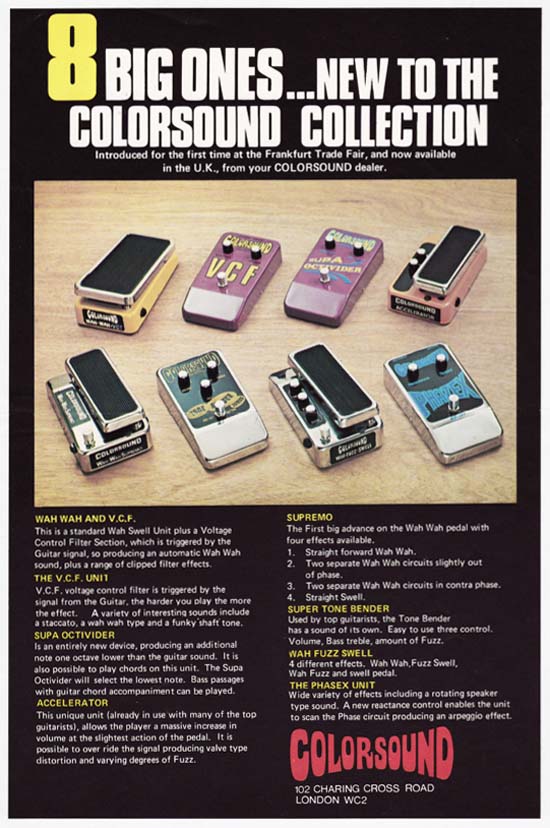
1978 Colorsound Leaflet
•1994 - Colorsound Tone Bender reissue on market, sold by Macari's of London. Based on the 1970's three transistor Jumbo Tone bender circuit, not a Gary Hurst Tone Bender circuit.
•1995 - Tone Bender MKII reissue on market, sold by Macari's of London. Supposedly replicated or supervised by Dick Denney. It is not based on the Gary Hurst three-transistor MKII circuit, but is a copy of the two-transistor MK1.5 circuit. Rumors began after this that it was proof of Dick Denney being the designer of the MK1.5 circuit, but Macaris stated the circuit was cloned from an original Sola Sound MKII Tone Bender loaned to them, which just so happened to be a rare one with a MK1.5 circuit inside.
•1996 - Colorsound Fuzz Box on market, built by Dick Denney and sold by Macari's of London. Also called the One Knob Fuzz Box. Dick Denney stated he designed a two-transistor fuzz circuit prototype back in the 1960's. He kept the original circuit and it was used as the basis for the one knob Colorsound Fuzz Box that was released in 1996 by Macaris for their Colorsound line. It was later revised and built by Jake Rothman for Macaris.
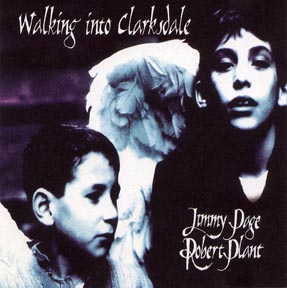
•1997 - According to Jimmy Page, he used his original Tone Bender for the Walking Into Clarksdale sessions in 1997. This may have been the Professional MKII Tone Bender sent to him by Macaris Musical Exchange in December 1966, and seen on stage with the Yardbirds in 1967 and Led Zeppelin from 1968-1971, or perhaps just one of several page owned. It died during the Clarksdale sessions in 1997, but can be heard on the second Clarksdale solo, according to Page.
From Guitar World in 1988: "I did use the Tone Bender on Walking into Clarksdale (the song from the same album). But I blew it up! It suddenly ceased to function. But I got enough of what I wanted down on tape, so that was all right. I just went down to the studio and did the first solo (at 3:23 into the song) on a Telecaster through a Marshall. That's the first solo you hear. Then I did one using the Tone Bender (4:09 into the song). I just changed [equipment] immediately and did two or three passes. Then I changed again and did some with the Whammy (4:24). In a way, I suppose it was tipping the hat to all the styles I've played down the years. The first solo is a classic Page solo like something from the early Led Zeppelin days. The second one is almost a bit Yardbirds-y, you know? And then the third is a far more radical, modern approach."
_________________
A note on circuit "design" credits - There is much debate on how much actual designing went on in the creation of these early fuzz circuits. It should be noted that basic amplifier circuits appeared in Mullard, Valvo, GE, and Phillips application books in the 1950's, '60's and '70's. These books offered examples of audio amplifier circuits designed to use transistors, specifically to help sell more of their transistors. Electronics engineers at the time often used these text book circuits in fuzz and booster pedal designs as clients usually wanted things fast and inexpensive. Sometimes they used nearly the exact book circuits or slightly modified forms, sometimes combinations of those different circuit stages, other times only the circuit architecture was used, but component values were changed to suit the application. That was how most circuit design was accomplished back then, and it is still done that way today. I would speculate that 90% of all pedal circuit design is based on something that previously existed. When a person is credited as the "designer" here, it is in reference to the person most directly responsible for putting the end circuit design in the pedal, regardless of whether or not it was based on something that existed previously.
CONTINUE TO PAGE 5 • BACK TO PAGE 1
BACK TO THE FUZZ AND MUFF TIMELINE
Website and contents ©2007 and ©2013 Kit Rae. All rights reserved. Linking to this website is allowed, but copying the text content is strictly prohibited without prior authorization. No part of this work may be reproduced, stored in a retrieval system, or transmitted in any other form, or by any means, electronic, mechanical, photocopying, recording, computer networking, or otherwise without prior permission in writing from the copyright holder(s).
Kit’s Secret Guitar, Gear, and Music Page
Guitar stuff, gear stuff, sound clips, videos, Gilmour/Pink Floyd stuff, photos and other goodies.
Copyright Kit Rae.
VISIT MY SWORDS, KNIVES and FANTASY ART WEBSITE www.kitrae.net
